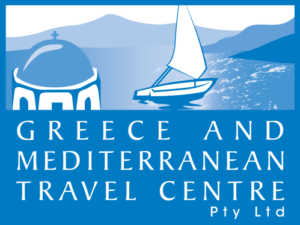Things to do
Old Town: When you enter Dubrovnik Old town, in front of you is Stradun, the main street in the old town. Here you will find the Onofrio Fountain, built in 1438. On the right is the Franciscan Monastery, with one of the oldest functioning pharmacies in Europe, in operation since 1391. At the other end of Stradun, you will find the locals’ favourite meeting place, the Orlando Column, with the nearby Sponza Place and the baroque Church of St. Blaise. Here also is the Rector’s Palace, built in 1441, which is now a city museum packed with valuable and historic exhibits.
Opposite the palace through a narrow street is a square, Gunduliceva Poljana, which is the site of the busy morning market. In the same square is the Jesuit Monastery that is from the early 18th century.
Dubrovnik Old Town Walls: The city walls were originally constructed in the 10th century, although fortified considerably in 1453. They are 3m thick along the sea wall, and 6m thick inland. The Old Town has fortresses at its four corners, which are the Minceta Tower, Revelin Fortress, St John’s Fortress, and Bokar Bastion. You can walk along the Old Town walls, and this is one of the things you should do when in Dubrovnik.
Sponza Palace: Constructed in 1522, it houses the city archives upstairs whilst downstairs is used for exhibitions, and during the Summer Festival.
Pile Gate: Since the 16th century, the western gate was and is the traditional entrance to the Old Town. The gate contains a statue of St Blaise, Dubrovnik’s patron saint.
Onofrio’s Large Fountain (Great Onofrio Well): Originally constructed in 1438 by Italian architect Onofrio della Cava, the fountain was partially damaged in the 1667 earthquake. The fountain was part of the city’s water mains constructed in the 15th century which brought water from the Dubrovacka River 12km away.
Ploce Gate: The eastern entrance to the Old Town, this gate stems from the 15th century.
Franciscan Monastery: The main part of the monastery was destroyed in the earthquake of 1667 and was rebuilt. The monastery also contains what is thought to be the oldest pharmacy/apothecary in Europe, from 1316, and a calming cloister from 1360.
Dominican Monastery: located just behind the Sponza Palace and Ploce Gate. The monastery dates from the 14th century and features beautiful stairways that lead to the Church and the statue of St. Dominic. In the heart of the monastery, there is a 15th-century Gothic cloister with arches, columns, plants and well (see below photos). The monastery was established in 1255. There is also a Museum within the Monastery complex that displays numerous exhibits of religious art from Dubrovnik and beyond including paintings and various reliquary
The Church of St Blaise: a Baroque church, built between 1705 and 1717, which features a silver statue of the Dubrovnik patron saint on the altar, holding a model of the city, which is brought out each year during the Festival of St Blaise. The stained-glass windows of the church are relatively recent, having been added in the 1970s.
Clock Tower: an elegant 31 m high timepiece, dating from the 15th century is a magnificent landmark of the Old Town. It is located at the very end of Stradun, next to Sponza Palace in Luža Square. The clock tower overlooks Orlando’s Column and St Blaise Church.
The Cathedral: The cathedral currently standing dates from 1673, designed by Roman architect Andrea Buffalini to replace the original 12th century cathedral which was destroyed by the earthquake. The cathedral includes an Assumption of Our Lady/The Virgin painting that has been assumed to have been painted by Titian. The Treasury of the cathedral is home to the skull of St Blaise which has been encased in a jewel-encrusted crown. Another earthquake in 1979 saw cause to dig drains beneath the cathedral; these excavations uncovered a Romanesque cathedral beneath the current one. Further digging, uncovered another church underneath this one, dating from about the 6th century.
Rector’s Palace: Mainly designed by Onofrio della Cava – who also designed Onofrio’s fountain – the Rector’s Palace has a somewhat turbulent history. Currently home to the city museum, the palace was home to the Rector, who acted as a kind of figurehead of the Republic of Ragusa with little actual power.
Dubrovnik Cable Car: One of Dubrovnik’s famed attractions used to be its cable car – built in 1969 – which rose up to the top of Mount Srdj above the city, giving visitors a chance to take in some (even more) spectacular views of the Old Town and the shoreline. A journey to the top of Mount Srdj takes only 3 minutes, and once there you can take in the views whilst enjoying a snack, or something more, at the cafe at the top.
Mount Srdj: At the top of Mount Srdj, and also relatively new, is the Museum of the Croatian War of Independence which, through its various exhibits, shows how Dubrovnik defended itself during the 1991-95 war. The Museum is housed in Fort Imperijal, which was built in the early 19th century when Dubrovnik was controlled by the French (and Napoleon) as a means of defending Dubrovnik.
